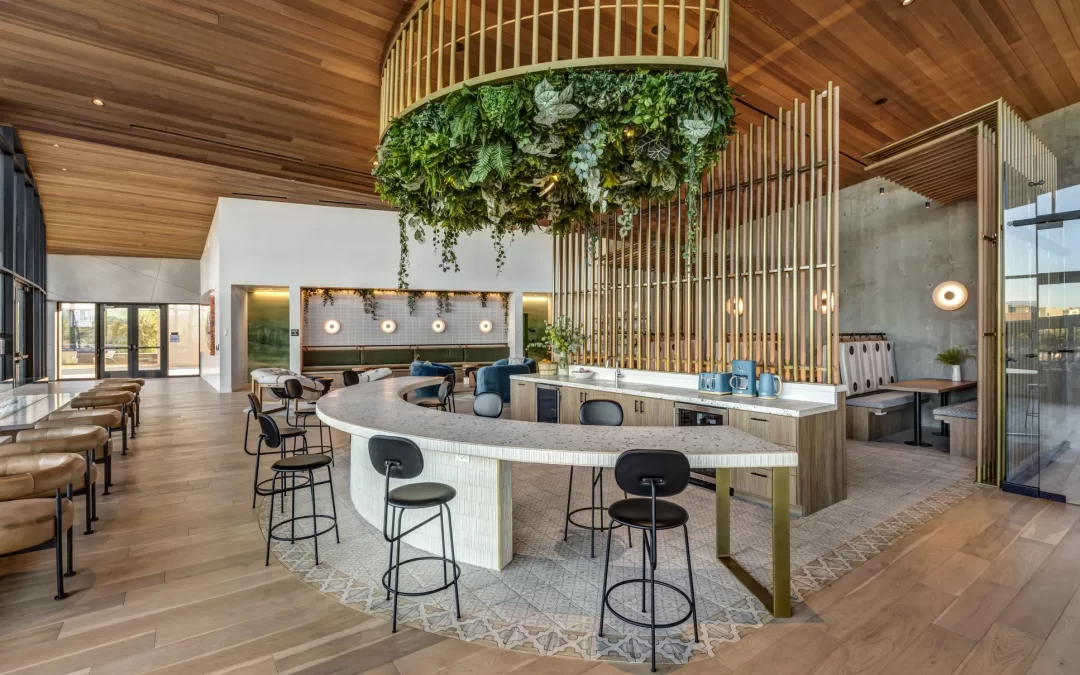Resort Branding Through Decor: The Art of Creating a Unique Identity
In the highly competitive hospitality industry, creating a distinctive brand identity is crucial for resorts seeking to differentiate themselves and foster long-lasting guest loyalty. Resort decor is a powerful tool in achieving this goal, as it directly influences guest perceptions and experiences from the moment they step onto the property. By thoughtfully curating every element within the resort, from the grand lobby to the smallest details in guest rooms, resorts can craft a unique and memorable identity.
The Role of Decor in Resort Branding
Decor is not merely an assortment of furniture, colors, and materials. In the context of resort branding, it becomes a medium through which the resort tells its story, communicates its values, and sets itself apart. Here’s how resorts can harness decor to define their brand:
- Establishing Atmosphere: The decor significantly contributes to the overall atmosphere of the resort, setting the tone for the guest experience. A beachfront resort might use light, breezy decor with natural materials like wood and linen, evoking a sense of relaxation and connection to nature. In contrast, an urban luxury resort might opt for sleek designs and sophisticated furnishings that speak to opulence and exclusivity.
- Reflecting Brand Values: Decor should align with the core values and mission of the resort. Environmentally-conscious resorts might use sustainable materials, energy-efficient lighting, and local craftsmanship, reinforcing their commitment to sustainability. Such decor choices not only appeal to environmentally-minded guests but also actively reinforce the resort’s brand message.
- Enhancing Aesthetic Appeal: First impressions are critical in hospitality, and the decor is often the first aspect a guest notices. A well-designed lobby with impressive art installations or a tastefully decorated room with regional influences can immediately capture guests’ attention, setting a positive tone for their entire stay.
- Cultivating Emotional Connections: Successful resort branding through decor taps into the emotions of guests, leaving lasting memories. Whether through a carefully curated scent, the perfect ambient lighting, or unique decorative elements that tell a story, these sensory experiences can create an emotional bond between the guest and the resort, encouraging loyalty and repeat visits.
Strategies for Effective Resort Decor Branding
To effectively utilize decor as a branding tool, resorts can consider the following strategies:
1. Embrace the Local Culture
Integrating local culture and elements into the resort decor can provide authenticity and connect guests to the destination. From using local artwork to incorporating design motifs that reflect regional traditions, these elements can make the resort feel unique and embedded in its surroundings.
2. Use Signature Design Features
Creating signature features, such as an iconic sculpture, a stunning infinity pool, or a grand atrium, can make the resort instantly recognizable. These signature elements not only serve as a visual representation of the brand but also become talking points that guests might share through word-of-mouth or on social media.
3. Consider the Guest Journey
Understanding the guest journey is key to designing decor that enhances the experience at every touchpoint. From the welcoming vibe of the entrance to the comfortable and thematically consistent design in guest rooms, every space should feel cohesive and aligned with the brand’s overarching story.
4. Adapt to Seasonal or Event-Based Themes
Adapting decor for different seasons or special events can keep the experience fresh and exciting for repeat guests while remaining true to the brand’s identity. Subtle changes, like themed decorations or color adjustments, can create a dynamic experience that evolves with time.
Case Study: A Decor Branding Success
Consider a resort located in the heart of a wine country, which has successfully used decor to strengthen its brand identity. By incorporating wine barrels in the lobby design, using vineyard-inspired colors, and displaying local art focused on the wine-making process, the resort creates an immersive experience for wine enthusiasts. The guest rooms feature custom furniture with iron and wood finishes that echo the rustic elegance of the surrounding vineyards. These decor choices become integral to the brand narrative, positioning the resort as a must-visit destination for wine lovers.
Conclusion
Resort branding through decor is both an art and a strategic endeavor, blending visual aesthetics with the brand’s story and values. Resorts that successfully deploy decor as a branding tool can create spaces that captivate guests, differentiate their property, and cultivate enduring brand loyalty. Through thoughtful design and meaningful decor choices, resorts can ensure that every element speaks to their unique identity, leaving guests with memorable experiences that resonate long after their visit.



